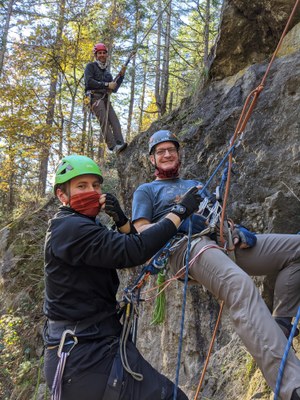
Trip Report
Self-Rescue Practice Clinic - Cougar Mountain Crag
Perfect day to teach Rescue.
- Sun, Nov 1, 2020
- Self-Rescue Practice Clinic - Cougar Mountain Crag
- Cougar Mountain Crag
- Climbing
- Successful
-

- Road suitable for all vehicles
-
Dry, warm, and clear, that won't last for very long now :)
We had 4 students from this year's Tacoma Intermediate program (down from 6 after last-minute cancellation), and 2 instructors (Alyssa and myself), which worked great.
The program included rescuing a fallen follower on a multi-pitch climb on a vertical wall, with transition from counterbalance to tandem rappel using the intermediate anchor. Students got a handout with very detailed instructions 3 weeks ago, and practiced things beforehand.
We've spent a full day, from about 9am to shortly before 5pm.
During this time:
- We went through the demo, questions, and discussed variations of the techniques (e.g., spider vs. rope lanyard), focusing on scenarios with limited gear (e.g., what if the cordelette had to be left behind).
- After that, the two teams concurrently went through a few rounds of practice.
- Two of the students felt confident enough to progress to scenarios on the wall and went through the full scenario competently.
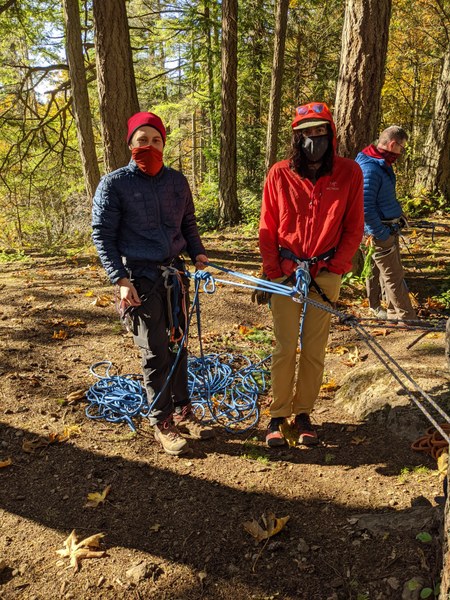
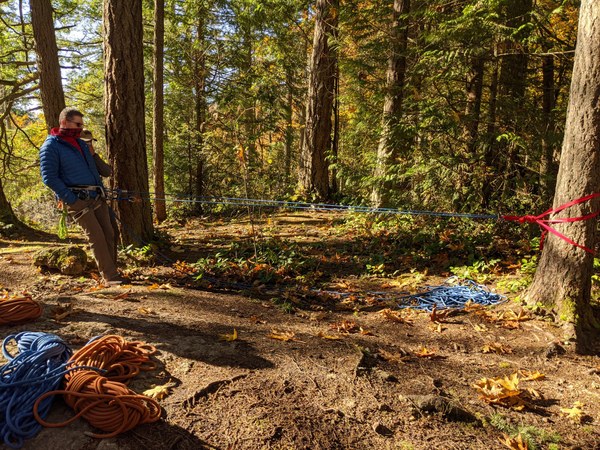

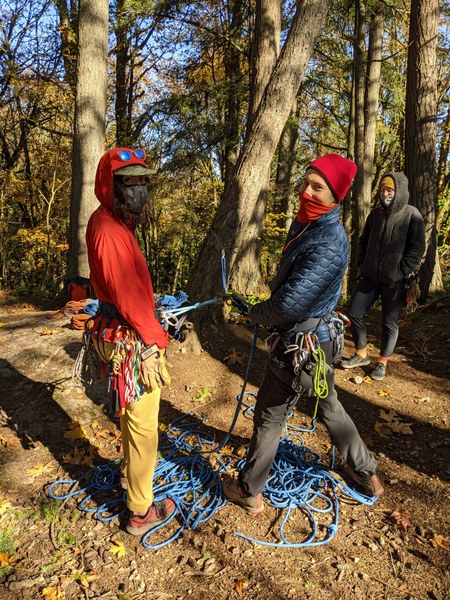
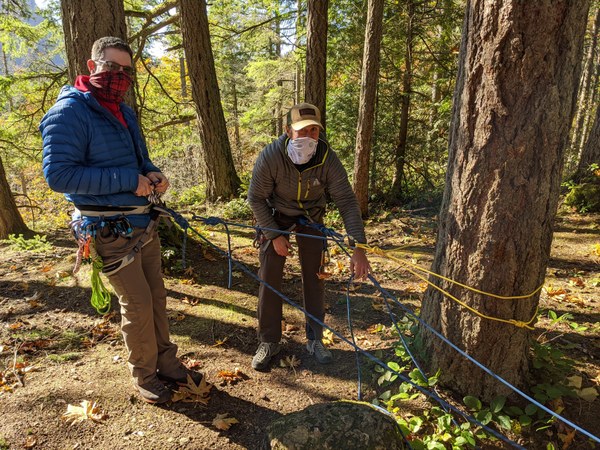
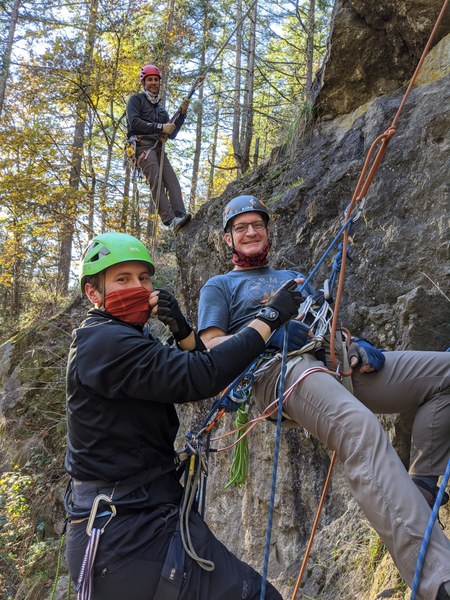
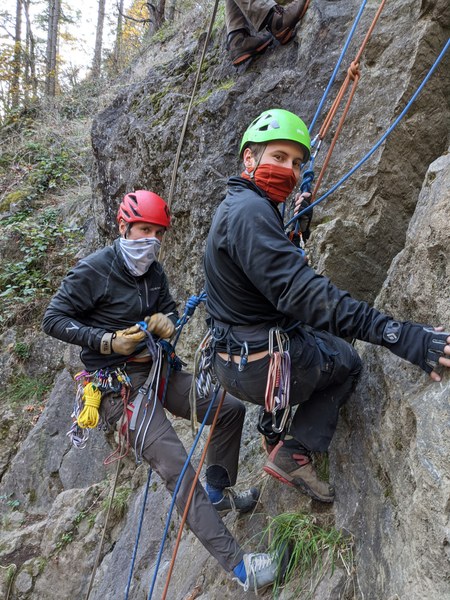
During practice, we used one rope per person:
- One rope for the practicing team.
- Second rope to create intermediate anchor remote master point, and for students to clip to and prusik on as a safety backup.
- Separate ropes for the instructor and for each of the spectators rappelling next to the practicing team to observe and give feedback.
Main and backup ropes were independently anchored. Doubled rope safety handline extended from the anchor to the center of the flat space at the top of the crag, ~30 feet of flat ground away from the sloping area near the cliff. Students remained redundantly connected to the handline while getting to the anchor, and thereafter, redundantly connected to the main practice rope and backup rope while going through the scenario. All steps were observed by the instructor and critical transitions verified for safety before proceeding.
All the above took us almost 8 hours, with the 2 rescues done in sequence (the students opted to watch each other practice, rather than trying to have two teams do it in parallel).
Overall, a great day and perfect time of the year to be practicing rescue while there are very few climbing opportunities out there.
Good job everyone!
 Krzysztof Ostrowski
Krzysztof Ostrowski